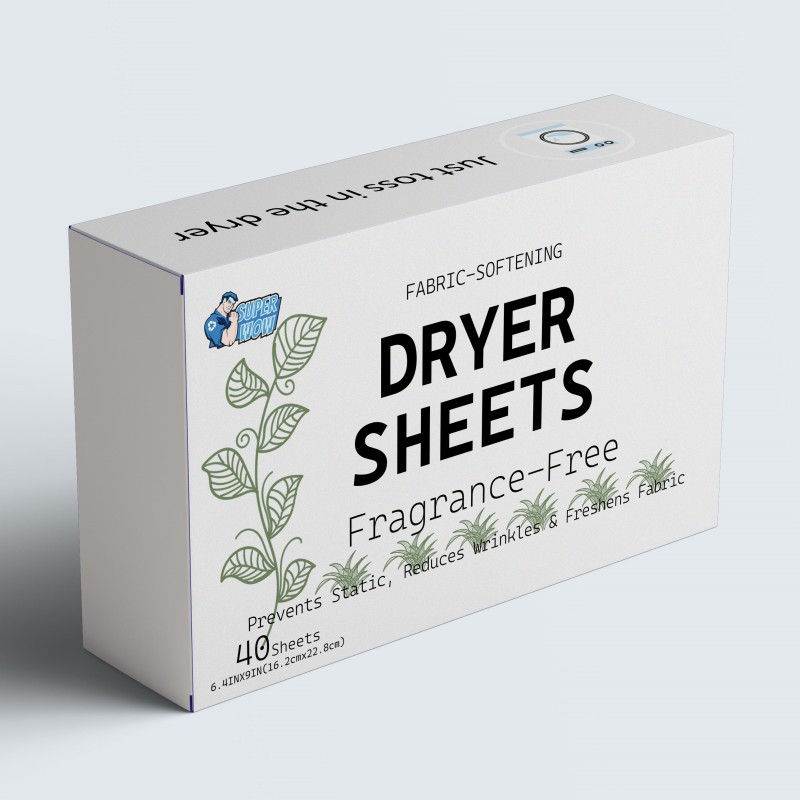Have you ever wondered why your clothes emerge from the dryer clinging together as if magnetized?
What causes this annoying phenomenon known as static cling?
And more importantly, how can something as simple as a dryer sheet transform your laundry experience, making your clothes not only smell fresh but also free from the grip of static electricity?
This article dives into these intriguing questions, unraveling the science behind dryer sheets and their role in banishing static cling from our daily laundry routine.
What Causes Static Cling?
Static cling happens when clothes in a dryer rub together, causing tiny electric charges to build up. These charges make the clothes stick to each other. It’s more common with certain types of fabrics, especially synthetics.
The dryer’s warm, dry environment makes it easy for these charges to build up. That’s why we often find clothes sticking together when we take them out of the dryer. Dryer sheets help to reduce this cling by balancing out these electric charges.

How Dryer Sheets Work To Prevent Static?
Dryer sheets contain a combination of fabric softeners and fragrances, often mixed with specific chemicals that have anti-static properties. These ingredients are typically applied to a thin, non-woven fabric or paper sheet.
When a dryer sheet is used in a clothes dryer, the heat and motion help to distribute these softening agents and anti-static chemicals onto the clothes. This distribution effectively neutralizes the static charge that builds up during the drying process, reducing the tendency of the fabrics to cling together or to your skin.
Additionally, the softeners in the sheets can help make the fabric feel softer and impart a pleasant fragrance.

Other Solutions To Prevent Static
Use Fabric Softeners When Washing Clothes
Using fabric softeners when washing clothes can enhance their texture and reduce static cling. These softeners work by depositing lubricating chemicals on the fabric, which makes the fibers smoother and less likely to stick together due to static electricity.
This process not only reduces static cling but also can make the fabric feel softer and smell fresher.
It’s a complementary method to using dryer sheets and can be particularly effective when used in combination with them for optimal fabric care and static reduction.
Avoid Over-Drying Your Laundry
Avoiding over-drying your laundry is crucial in reducing static cling. When clothes are dried too much, the low humidity and high temperature increase static electricity.
By ensuring your laundry is dried just enough but not too much, you can significantly reduce the chances of clothes sticking together.
This approach not only prevents static but also helps in conserving energy and maintaining the quality of your clothes over time.
Humidify Your Home
Increasing the humidity in your home is an effective way to reduce static cling. Static electricity is more likely to occur in dry air, so by adding moisture to the air, you can decrease the chances of static buildup. This can be done using humidifiers or by placing water containers near heat sources.
Maintaining a balanced humidity level in your home, especially during dry winter months, can significantly help in reducing static cling in your clothes and throughout the home.
Air Dry Clothes
Air drying clothes, especially those made from synthetic fibers, is a good strategy to prevent static buildup. When clothes are air-dried, they are not subjected to the tumbling and friction of a dryer, which is a major cause of static electricity.
This method is particularly effective for synthetic materials, which tend to generate more static. By allowing clothes to dry naturally, you can significantly reduce the occurrence of static cling.
Use Wool Dryer Balls
Using wool dryer balls is an effective way to reduce static in the dryer. These balls work by physically separating clothes as they tumble, which minimizes friction and, as a result, reduces the static build-up.
Wool dryer balls can also help in speeding up the drying process and are a reusable, eco-friendly alternative to single-use dryer sheets. They are particularly useful for large and bulky items, ensuring more even drying and less static.

Vinegar Rinse
Adding a bit of vinegar to your laundry during the wash cycle can act as a natural fabric softener and help reduce static cling. The acetic acid in vinegar helps to balance the pH of soap, leaving your clothes feeling soft and reducing static.
It’s a natural and cost-effective alternative to commercial fabric softeners and is especially useful for people with sensitive skin or allergies. Just add a small amount of white vinegar to the rinse cycle, and it can effectively minimize static without leaving any lingering vinegar smell on your clothes.
Frequently Asked Questions On Dryer Sheets Of Preventing Static Cling
Do dryer sheets really work?
Dryer sheets work by reducing static, depositing scents and helping make laundry feel softer to the touch. One of the key benefits of dryer sheets is that the ingredients in them help to combat, neutralize and fight the effects of built-up static in most fabrics. (From whirlpool )
Do dryer sheets actually remove static?
Dryer sheets stop static cling by absorbing static electricity formed by different fabrics during your dryer cycle. The fabric softeners that coat dryer sheets are positively charged ions to balance the electrons and ions that cause static cling, leaving you with soft clothes without the static. (From biokleenhome )
How many dryer sheets should you use?
For a medium sized load, use two. For a large or extra-large load use 3. If you find yourself often doing large loads, you may want to consider using one of Bounce’s new Mega Sheets. Mega sheets are specially designed to provide 3X static and wrinkle fighting ingredients* with just one sheet. (From Bounce )
Related Researches
How to Get Rid of Static Cling
How to Avoid Static Cling in Your Laundry





